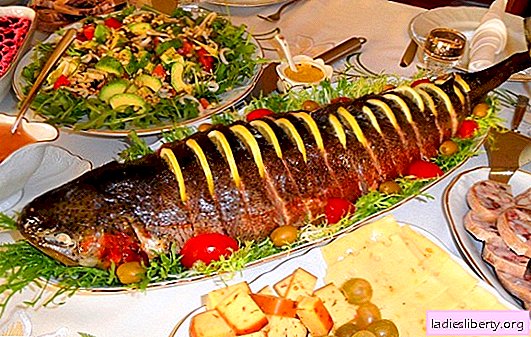
Ordinary and everyday things can be turned into masterpieces of design thought. Even with an ordinary blanket, after some modifications, it can give a lot more aesthetic pleasure. Add to the interior room comfort and warmth, which is often lacking.
DIY quilt: features
There are a huge number of quilt options. Cut out of different materials, pieces of fabric are selected in advance, and then sewn together into a whole fabric. Do not use shabby material that can go to waste.
To get a single blanket (1.5-2 meters) of a standard form, many rags will be needed. You should be patient, because even when sewing a patchwork quilt with your own hands from large pieces, it will take one or two days of hard work.
DIY quilt: materials and methods
Prepare a work surface. To sew a patchwork quilt you will need:
- a large table, because you need to lay out the cut pieces;
- tools: sewing machine, iron, scissors, thread, pins and needles, centimeter tape, cardboard for the template;
- fabric of different colors for the upper fabric and a single piece of fabric for the lower fabric;
- filler (synthetic winterizer or batting).
Decide in advance what size and shape the flaps will be. First, the front surface of the blanket is formed. Choose fabric by color and texture. Those who do not yet have experience in sewing such a blanket should choose the same materials in texture, it is better if they are cotton (linen, calico, satin or chintz).
Square blanket

Choose a fabric that you wash and iron in advance. Next, prepare a template by which you will cut the flaps. The template is cut out of a dense material, such as cardboard. In this case, it is a square 10 × 10 or larger. Decide for yourself what size your flap will be, and add one centimeter on each side. This is the stock that is necessary for stitching parts together.
Cut the fabric according to the pattern. With a pencil or a piece of soap, circle the pattern on the fabric, and only then cut it out. Do not cut a canopy or several fabrics at the same time. Take the time and make good workpieces.
Lay out the cut parts in front of you in strict sequence.

Sew the flaps together by hand with a simple stitch, and then sew the seams on a sewing machine.

Squares are stitched vertically. You should get strips. Then they are stitched horizontally. This is how it looks.

The seam is processed with oblique scissors. These are special scissors for sewing. If you don’t have one, then you can make rare cuts on the fabric with simple scissors from the edge to the seam, not reaching the seam 1-2 mm.
The resulting front canvas connect with the filler and the lower canvas. To do this, cut off the desired piece of filler in size and immediately cut off a piece of the lower fabric. First put the bottom fabric, insulation and the top fabric of the blanket on it. You will get three layers that are sewn together along the edge manually with a simple stitch.
The lower canvas and the edging are selected by their cotton fabric. Usually this is the material of the same color, combined with the front of the blanket.
Sew the blanket obliquely. Cut the fabric for the edging, you should get four stripes, the length of which is the same as the length of the blanket, and the width is 5 cm. Wrap the edges of the edging and sew it along the edge. The blanket is ready.
Stripes Quilt

These are large stripes. As a rule, they are horizontal on such a blanket, but they can also be made vertical if desired.
There are also options for quilts sewn from small strips. It is sewn in exactly the same way as a blanket of squares, only for the upper part of the blanket, the flaps are cut not in squares, but in stripes. They are folded together, stitched, and then connected to the filler and the bottom of the blanket.
Such a scheme for stitching patterns from stripes is considered difficult. Dexterity and accurate calculation are required here.


But there are such options for a blanket from stripes, such as:


The stitching principle is absolutely identical as in the manufacture of a patchwork quilt from squares. The flaps are first stitched into one line in stripes, and then these lines are stitched together.
Quilt made from small pillows

The bewitching look of such a blanket will not leave anyone indifferent. It is made of small squares-pads. First, the pads themselves are made, and then they are sewn together.
To make one pillow you will need two squares sewn together. You should choose the sizes yourself. For small squares, sizes 10-10 cm are suitable, and for a blanket made of large pillows, the size of the square can reach 25-25 cm. A blanket from large pillows also looks spectacular.

You also choose the number of pillows for the blanket yourself, based on the desired final size of the finished product. The pillow will have a front side and a bottom. The lower one will hide from the eyes and remain inside the blanket, so choose a beautiful colored fabric on the front, and on the lower plain.
Sew the three sides of the square, and through the resulting pocket, insert the synthetic winterizer. Next, the remaining side must also be sewn. You will get many small pads.

Now we sew the pads together in a single line. The edges are bent inward. Further, the resulting lines are sewn together and in the same line. When the large canvas pad is ready, you can proceed to the next step.
At this step, we select and cut the bottom blanket fabric. Cut a piece of fabric the size of the resulting blanket, plus one centimeter on each side. Now you have a choice between two options. The first is that you can sew the bottom fabric with the top and you get a single-layer blanket, and the second option is when a layer of synthetic winterizer is placed between the upper and lower fabric. In the second version, the blanket will turn out to be unusually warm, and due to the lightness of the synthetic winterizer, it is practically weightless.
If you decide to use the second option, the filler between the layers needs to be fixed so that it does not get off during washing. It is enough to quilt the synthetic winterizer to the lower fabric with several transverse ties. This must be done before you begin to assemble all the parts together.
Having folded all the layers one on top of the other, sew a hem around the edge of the blanket. Do-it-yourself quilt from the pillows is ready.
DIY quilt: professional tips
• Think in advance what colors you would like to combine with each other.
• Draw on paper or make a rough picture on the computer of the pattern that you would like to see on the finished product.
• If you are a beginner and have absolutely no experience in creating a patchwork quilt with your own hands, do not immediately grasp the complex patterns or textures. Start small, for example, take cotton fabric and a simple pattern.
• Work with ironed fabric, this will allow you to make neat, smooth seams without creases. When sewing a quilt from flaps, the slightest mistake in the direction of the seam can lead to a violation of the appearance of the finished product.











